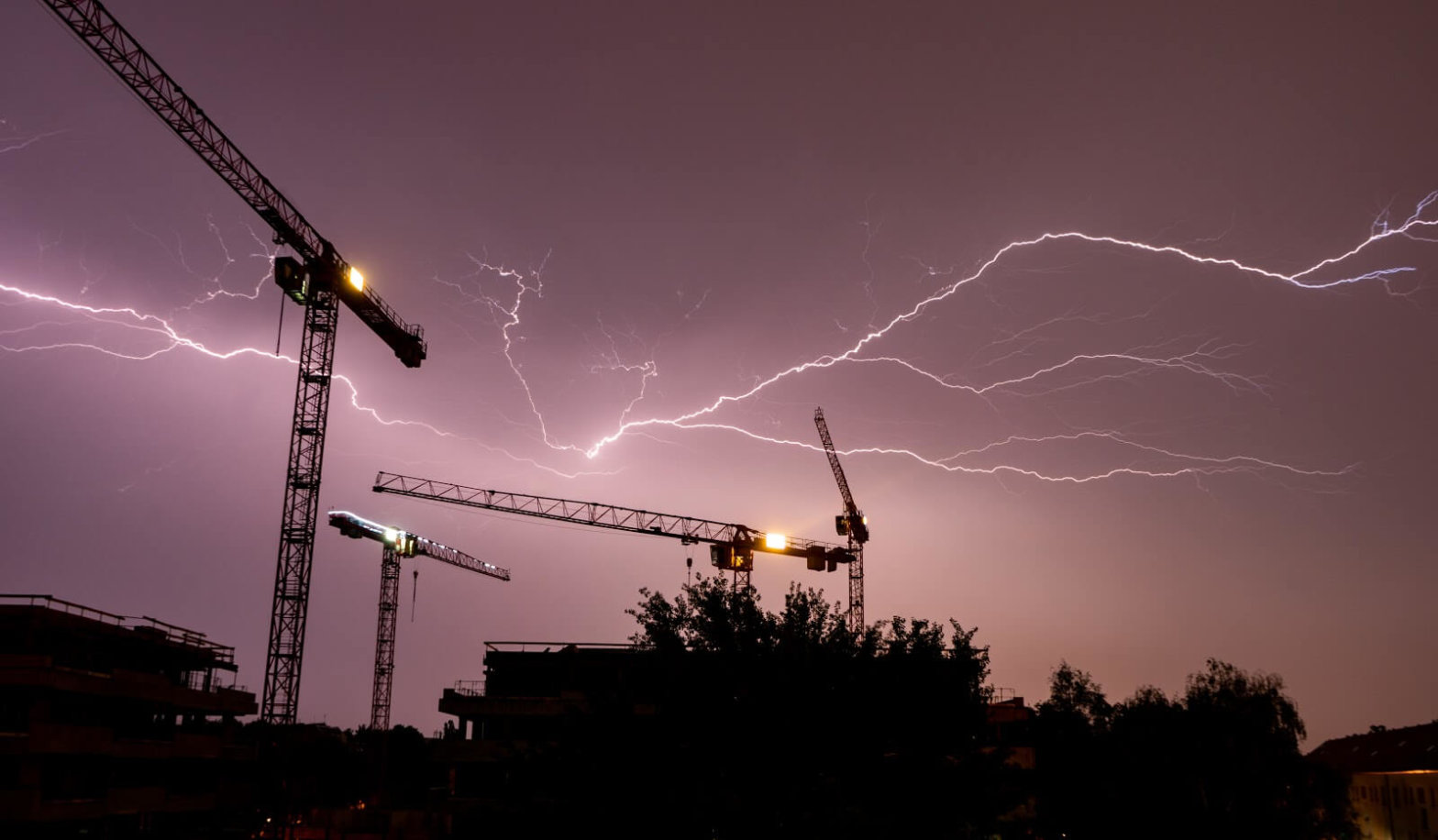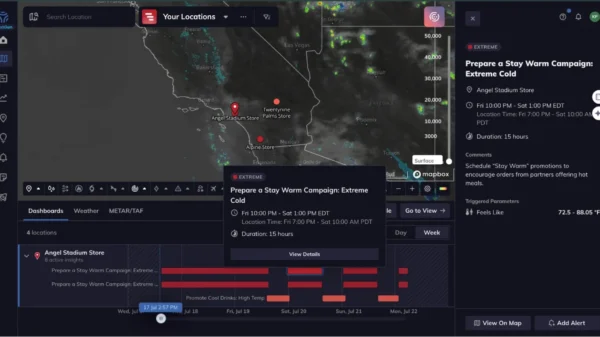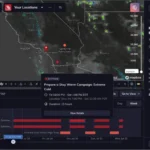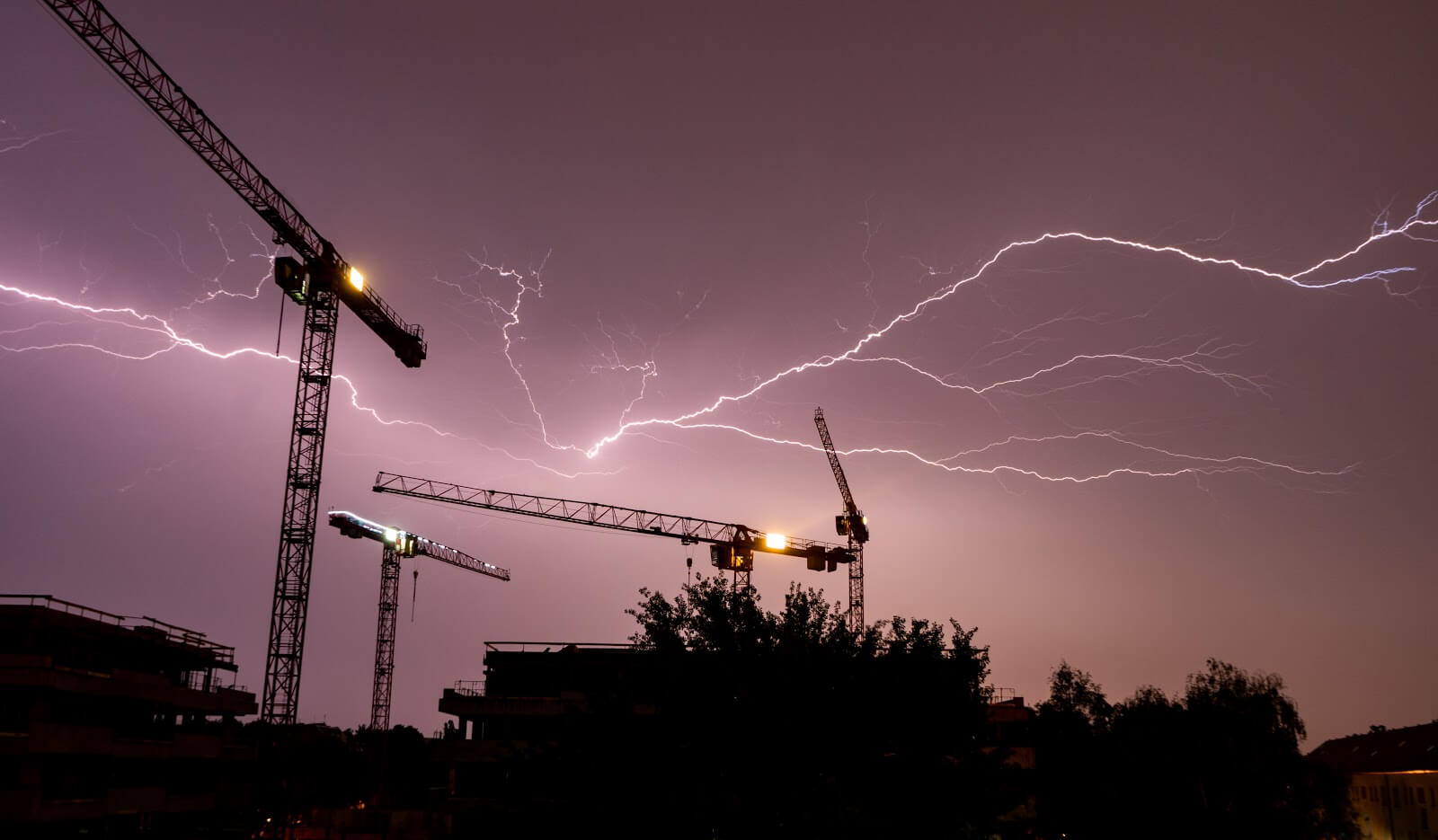
FMI Corp., a leading provider of consulting services to construction firms, found in a groundbreaking new study sponsored by Procore Technologies that on site safety and field productivity are among your industry’s greatest challenges. The survey also found that 70% of contractors aren’t taking advantage of existing technology that could help them address these concerns.
You know from experience that on-site safety and productivity depend heavily on the elements. Not knowing about nasty weather before it strikes causes construction to lose billions of dollars every year. And this scenario probably sounds familiar: entire crews not working because of a 30-40% chance of rain forecast that never materializes at a specific job site.
The big reason for this managerial nightmare is that you’ve had to rely until now on repackaged governmental weather data that’s vague and infrequently updated.
In response, weather-related software such as Tomorrow.io has recently been developed to provide solutions to problems caused by having to rely on inaccurate weather information and non-actionable insights.
Providing weather insights to make a job site safer
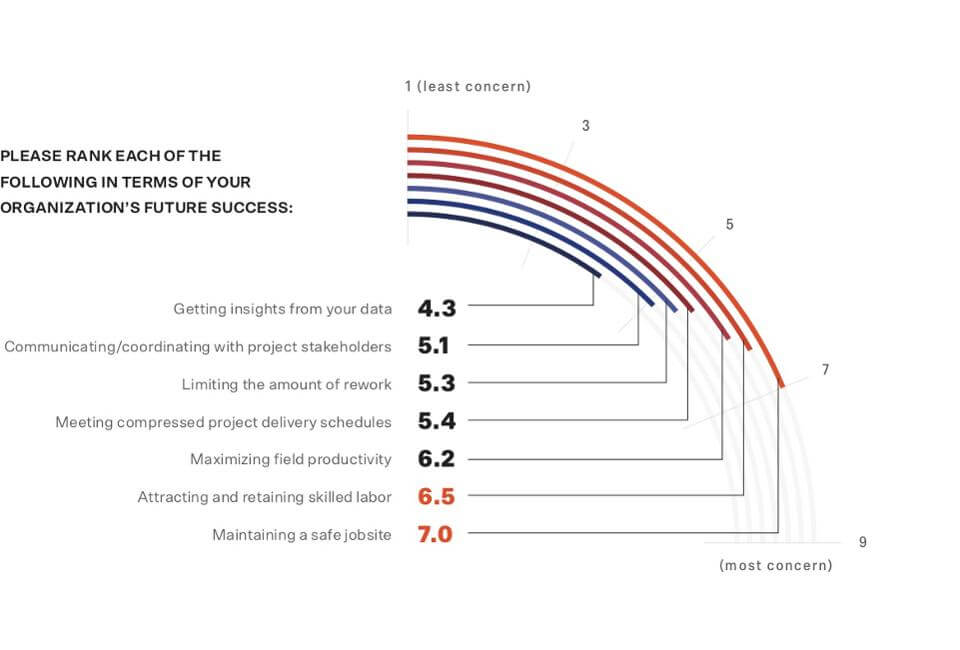
Top concerns for the future. FMI
There’s a good chance that you and your team plan projects around information that provides no usable insights about how weather conditions will impact specific projects. This lack of certainty makes it much more difficult for you to take the proper precautions to ensure safety when the weather at your job sites suddenly turns nasty.
The good news is that cutting edge software solutions are making it possible to increase crew safety, since your project managers can now gain easy access to timely information about lightning, high winds and other probable weather phenomenon at specific job sites as well as generate invaluable customized insights. For example, Tomorrow.io can get a project manager a quick insight into a specific potential equipment or job site hazard that will impact a project’s timeline.
This level of weather accuracy and actionable insights is new to construction. It’s based on something called MicroWeather OS, which is based on unique weather information sources from the entire connected world – wireless signals, connected vehicles, and street cameras – with AI-driven models.
Once this data is transformed into localized, minute-by-minute, on-demand weather insights, you can quickly put that timely information to work for you on different projects.
Leveraging good weather windows and save shifts
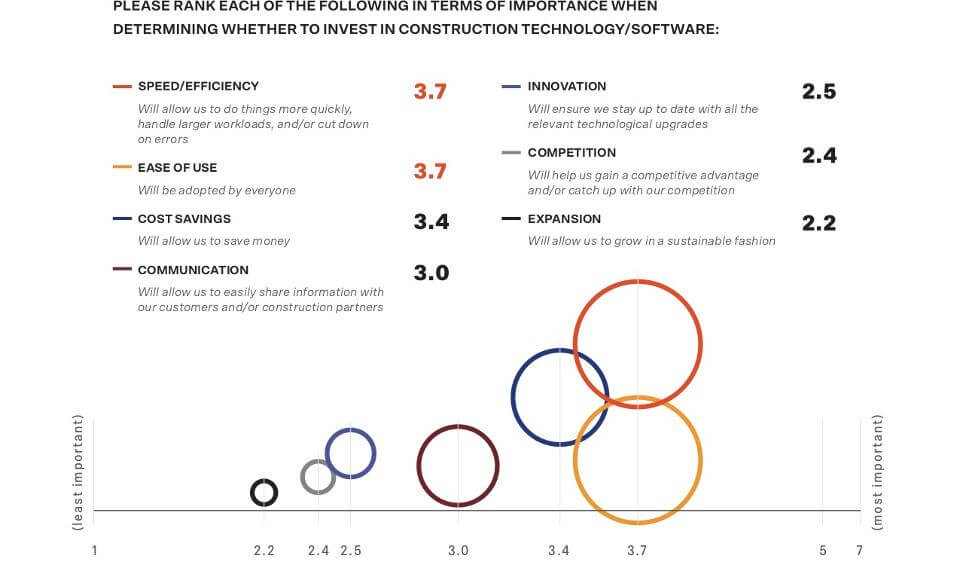
Importance ranking. FMI
Effectively scheduling crews around changing weather conditions is an ongoing problem. Without job site-specific weather forecasts you can’t possibly take advantage of windows of good weather. This lack of efficiency is part of the reason that the average pre-tax net profit for general contractors is razor thin, between 1.4 and 2.4%, and for subcontractors between 2.2 to 3.5%.
But if you haven’t embraced technological solutions to your onsite problems, you’re not alone. The overwhelming majority of construction firms still don’t have a technology road map. But those that have started using software solutions are seeing dramatic increases in productivity. Tech-savvy project managers are using Tomorrow.io to know exactly how many crew members to schedule and for how long. By taking advantage of even the smallest window of good weather, your construction firm will significantly reduce its sunk labor costs.
No more barriers to hyper accurate data: today’s software is meant to be USED
Besides increasing safety and productivity, the FMI industry report touches on another major pain point that’s keeping contractors from trying out software: usability. You may have memories of hard to use, time consuming solutions that couldn’t be accessed on mobile. But that’s all changed. Because of software like Tomorrow.io, you can now quickly access and communicate crucial information to your teams about fast changing weather conditions.
And the company’s new Insights Dashboard will save you massive amounts of time since all weather-related needs are combined in one user-friendly interface: no more having to toggle back and forth from one weather map to another.
In other words, you’re finally in a position to take control of your projects, instead of them being controlled by the weather.
See the 4 Ways To Weatherproof Your Next Project
